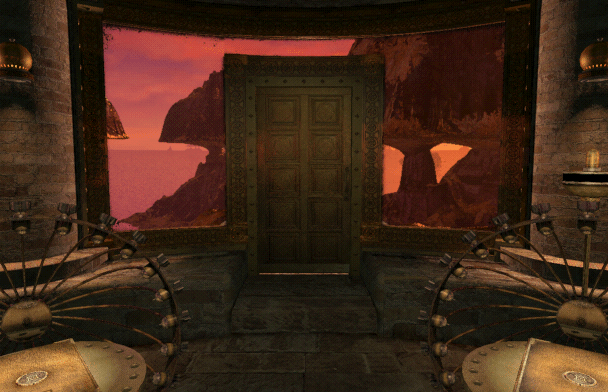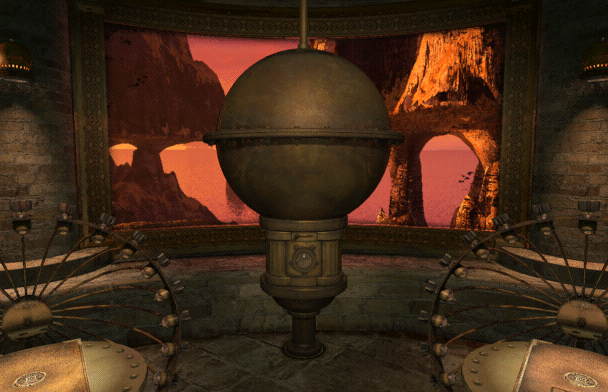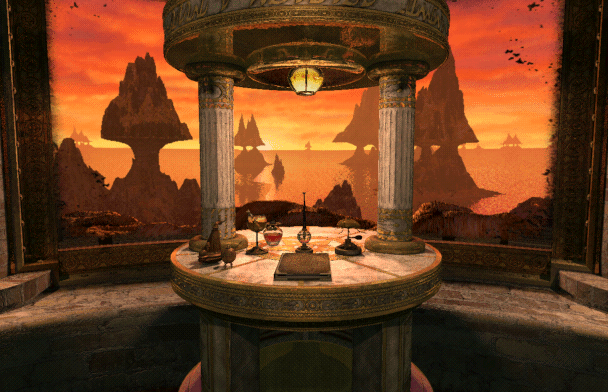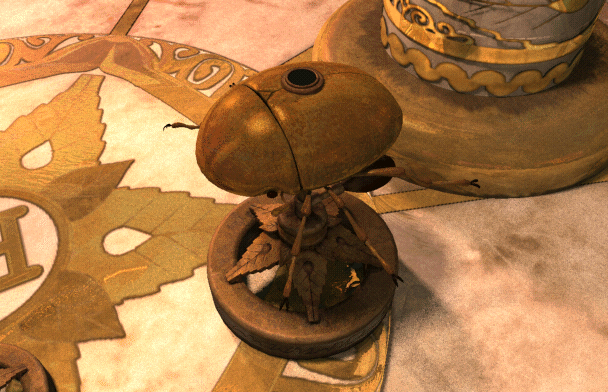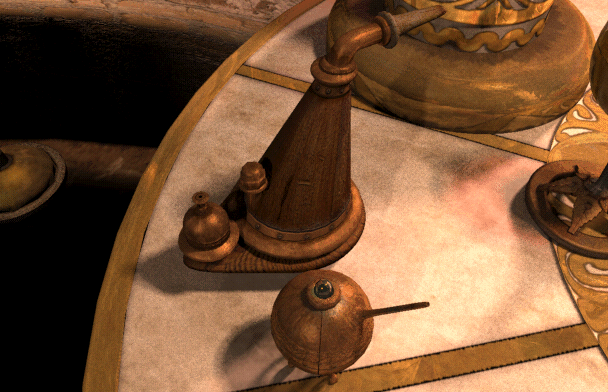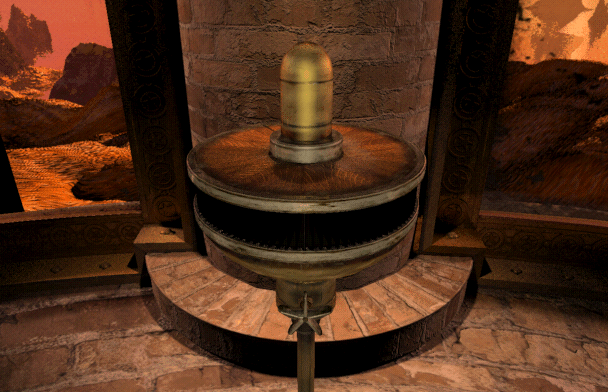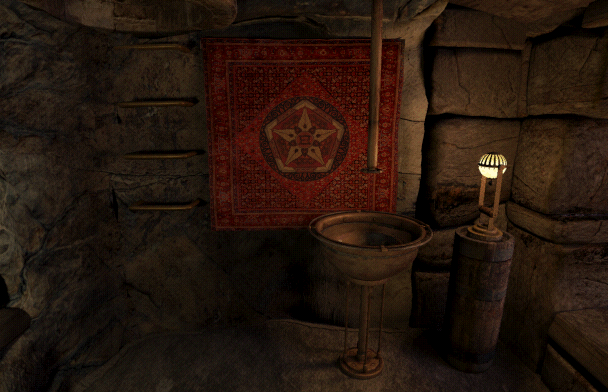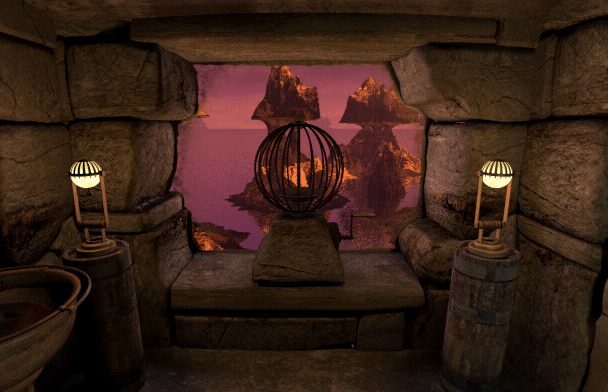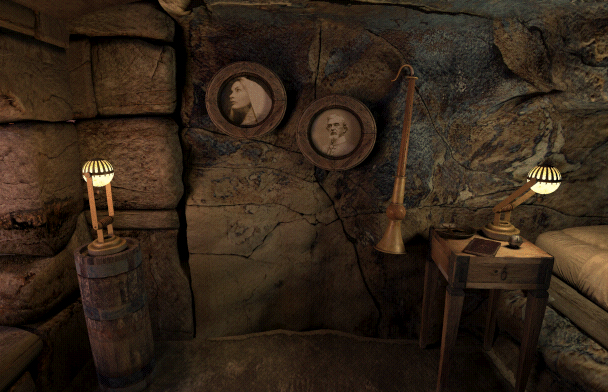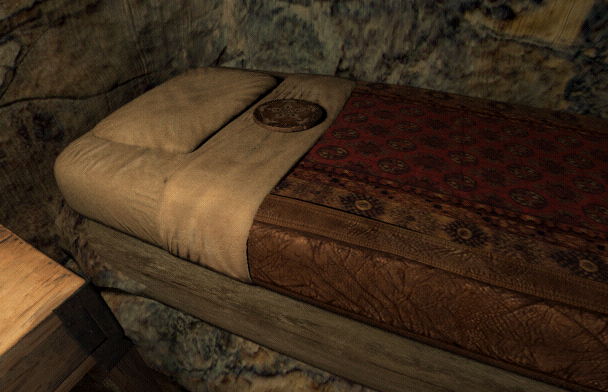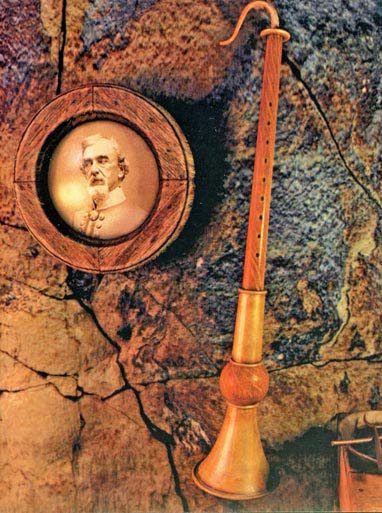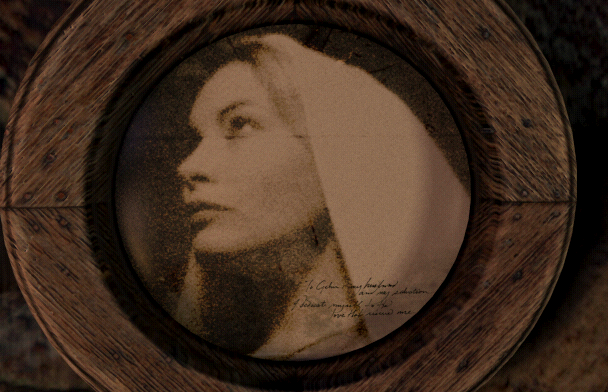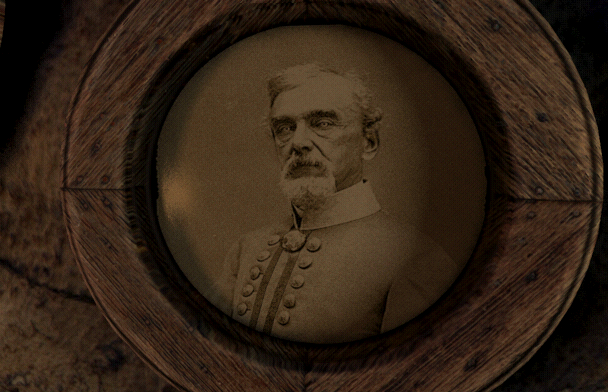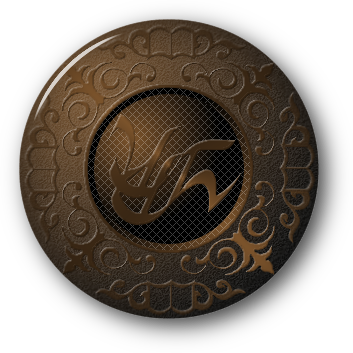

|
|
The 233rd Age was the first Age that Gehn wrote that he thought would be stable. As usual, it was unsuccessful as the environment turned out to be worse than he'd intended. However, it was stable enough that he moved his office and living quarters there. It was a good place for him to operate from as Riven broke apart, and the Rivenese rebels called the Moiety could not reach him there. He periodically linked back to Riven to monitor its deterioration, collect book-making materials from his followers, and to dispense his justice on Rivenese who'd violated his laws. When Katran learned that Gehn had been making books, she was horrified, and chastised herself for not realizing that he would always write the necessary ingredients for ink and paper into all of the Ages he wrote. It was an even greater shock for her when she learned of Age 233 because it meant that Gehn was no longer imprisoned in Riven as she and Atrus had intended.
Since Gehn was teaching his followers D'ni, he wrote his personal journal in English, a language none of the Rivenese save Katran could understand. However, his mathematics and numbering in the journal were in D'ni base 25 rather than the surface world's standard base 10. In his notes, Age 233 is written as the "98rd Age", which looks like poor grammar. In reality, it was meant to be read as (9x25)+8, and pronounced "two hundredth and thirty-third Age" in English. This also means that he had two hundred and thirty-two failures before he finally wrote an Age that didn't immediately begin to fall apart on him. Add that to the idea that not every sheet of paper produced by the Rivenese workers was acceptable to Gehn, and you can understand why Riven was running out of trees. Instead of recycling them, Gehn was in the habit of burning failed books, so the paper could not be rendered back into pulp and used again. Gehn's office in Age 233 was composed of a building with two levels. The upper, and largest level, was his laboratory and the lower level was his bedroom. Scattered around the building were his most precious possessions. These included a musical instrument called a maral-obe, a cannen (a copy he'd constructed of a D'ni sound recorder and player), a D'ni watch given to him by his father, an Amad style imager with a recording made by his wife, and still pictures of his wife and father. The office also contained the unfinished book for Age 234, which Gehn was writing as a refuge for himself and his followers. The world: Since the Stranger was never able to leave the office, his photographs could not give us very many clues about the world itself. The Age consisted of a number of small, rocky islands set in a wide sea, with virtually no usable land. The larger islands had peculiar mushroom-like shapes that may have been brought about by water erosion in a time when the sea level was much higher than it was when Gehn created his office there. Usually, they consisted of a wide, craggy upper island supported by two pillars of remaining rock, over a more worn lower island that had rubble strewn around it. Other, smaller islands are also found in the group that have no upper portion, and which probably sat below the ancient high-water mark. Gehn had to wear protective clothing and goggles when he ventured outdoors, and noted in his journal, "It is a harsh and desolate Age ~ but is nonetheless well suited for my purposes, and so I have designated it my 233rd. By studying it closely, I believe I will eventually be able to create a more appropriate Age for us to resettle on. For now, I will build an office and set up my living quarters there, in order that I may conduct my experiments in safety and without distraction." Gehn's Office level was a large, circular room with large windows facing in every direction. It was the base of a huge bowl that sat on its roof, and the windows are divided by thick pillars to support the weight of the bowl, and presumably the water it may have contained. This was the only door to the outside world.
This was a generator used to power the linking books. None of Gehn's books could operate without an external energy source.
This was the worktable, which held various artifacts.
The worktable had various small items on it, including an inkwell shaped like one of the beetles used in its making, and Gehn's smoking pipe. It has been theorized that Gehn smoked a blend of herbs that included a distillation of ytram poison that acted as a narcotic.
This was Gehn's cannen, and last held a recording of him playing the maral-obe.
This is a copy of the recording played by the cannen.
Gehn's bedroom was a small and rather austere room with a single window. It was carved into the peak of the island, and only one window exposed it to the outside. The only way in or out of the space was by means of a set of rungs leading to a ceiling hatch. This is Gehn's sink, with a gravity-fed water dispenser above it. It has been theorized that the large dish shaped structure on the top of the building was a water collection and storage tank, which depended on rainfall to refill itself. The tapestry on the wall behind it is Gehn's personal symbol, a pentagram made of five pen nibs, reflecting his fascination with the number 5.
The bedroom window, with an Amad style viewer on a window shelf. Gehn was impressed by Amad technology, and preferred their viewers over those of D'ni. While it is difficult to tell from existing movies and photographs, I suspect that Amad viewers were universally capable of three-dimensional holographic projections, while the majority of D'ni viewers were only capable of projecting two-dimensional images. There were, of course, exceptions to that rule, but they were rare and likely to have been very expensive.
The wall next to the bed, with pictures of Keta and Aitrus, and Gehn's maral-obe hanging on a peg. It is worth noting that his antipathy toward his mother and hatred of his son resulted in his having no mementos of them at all.
Gehn's bed, an austere mattress on a stone shelf. There is none of the grandeur one might have expected of a man who portrayed himself as a god.
This closeup shows Gehn's maral-obe in greater detail. The sound it made could be compared to an oboe or a duduk.
These are movies of Keta in the viewer, and the watch Aitrus gave Gehn, which rests on the bedside table. Keta's words in the recording have not been fully translated, but the general sense of them can be guessed. She says: Kenen atsū? Shēma? This means, loosely paraphrased, "Is it ready? I should talk?
Here are closeups of the two photographs. The first is of Keta, Gehn's wife who died delivering Atrus. She was also called Leira on occasion. She was a member of a civilization on Earth's surface called the Amad, who had advanced technology similar to that of the D'ni. No one knows where the Amad actually lived, or how Gehn found them. It's very difficult to read the message on Keta's photo, but it seems to say, "To Gehn my husband and my salvation. I dedicate myself to the love that rescued me." After the death of Aitrus and the Fall of D'ni, Anna took Gehn to the Cleft to live. It is not known why she chose the Cleft instead of her own childhood home, the Lodge, except that as the resting place of her father, it may have been too painful for her to go back to it. In his late teens, Gehn left to wander the world. He met and married Keta during his travels. Her pregnancy with Atrus was difficult, and Gehn brought her to the Cleft in the hopes that his mother's knowledge of D'ni medicine could help her. Anna was able to nurse Keta through the pregnancy, but was not able to save her when their child was born. Devastated by the loss of his beloved wife, Gehn left the Cleft again, abandoning Atrus to be raised by Anna. It was at this time that Atrus returned to the D'ni caverns and began his attempts to learn the Art. If one thing was certain, it was that Gehn was devoted to Keta and she to him. Had she lived, it is likely that he would have been a very different man after Atrus was born and later events would have been significantly different.
This picture is of Aitrus, Gehn's father and Atrus' grandfather. He was a member of the D'ni Guild of Surveyers, and was born into an influential noble family. Aitrus' family were the sponsors of Anna when she became the first ahrotahn to be granted D'ni citizenship, and Aitrus fell in love with her. When she accepted his proposal it sparked a controversy that contributed to the events that in turn led to the Fall of D'ni.
|
Myst, the Myst logo, and all games and books in the Myst series are registered trademarks and copyrights of Cyan Worlds, Inc. Myst Online: Uru Live is the sole property of Cyan Worlds Inc. The concepts, settings, characters, art, and situations of the Myst series of games and books are copyright Cyan Worlds, Inc. with all rights reserved. I make no claims to any such rights or to the intellectual properties of Cyan Worlds; nor do I intend to profit financially from their work. This web site is a fan work, and is meant solely for the amusement of myself and other fans of the Myst series of games and books. |
